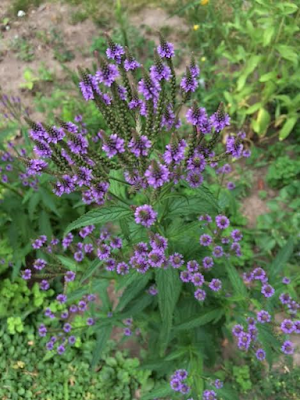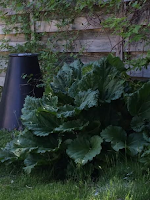When you have experienced trauma you need to find places to heal. For me my garden is a place of healing and wholeness. Just sitting under my huge Manitoba Maple in the backyard heals my somewhat battered soul and I feel its energy surrounding me. The simple actions of planting, watering, weeding and just watching are so restorative for me. The blue of the sky, the green of the leaves, the colours of the flowers and the life moving all around me, fills me with peace and badly needed tranquility. And peace and healing are what I need more then anything right now. Those of you who have experienced trauma understand how it disconnects you from the normal rhythms of life. You exist in the fight or flee mode and even something simple like sleeping is a challenge. So you need a place that reconnects you to yourself and the garden is that place for me.

One of the things I have been really pleased about is the number of pollinators that have shown up in the garden this year. Honey bees, native bees, bumble bees, wasps and the hummingbird have all been busy in my garden.




Its also clear to me that I really have created an eco system. This Sparrow hawk (that I originally thought was a Northern Goshawk), has been living all summer in the neighbourhood and has been hanging around my garden. Tough on the rabbits and chipmunks, but a welcome visitor to me. The other birds just flip out when he/she arrives. Grackles fill the maple trees and scream alarm, but the hawk just ignores them. The down side is that she views my bird feeder as an occasional buffet stop. But still, she is so beautiful.
This has also need the year of the hibiscus. While I have put a big emphasis on native plants in the backyard. I have this gorgeous hibiscus on the patio. it blooms and blooms and blooms, the most beautiful I ever had.
But what I just planted is this red perennial hibiscus. It over winters and blooms in July and August. I didn't know we had species like this, a lovely late summer surprise but a gorgeous flower, with a bold colour. I dug out some plants that never really worked in that space. Gardening is also about making choices and changing things when they are not working. Sort of like life.

 |
| The patio area, water fall, planters with flowers and herbs and my new hibiscus. |
The front yard has also done well despite the drought. My hollyhocks are my pride and joy this year. People have literally stopped on the street to look at them. Its not a flower that is often seen these days, but is a favourite of mine. The daisy's, cone flowers and lily's have all filled the front and I can see goldfinches landing on the cone flowers already looking for seeds.
Lastly the vegetables have started to come in, my brandywine tomatoes are growing nonstop and are so flavourful. Some of them I seeded indoors and there is great satisfaction is eating something you grew from seed. But I must admit that my vegetables have suffered the most from my absence. But I'm planning the fall crops now and will hope for a warm September.

I want to end this post with a personal plea. If you have a friend or family member who is experiencing trauma in any form there is only one thing they need: your presence. They don't need to be cheered up, they don't need to hear encouraging sayings or stories or to be told "its not that bad' or "it could be worse" or 'well its over now and the worse is behind you". That's just not helpful. All they need is someone to listen and just be there. Healing takes a long time, just being with the person, or sending a message that you are there for them and are with them is a gift whose importance you will never fully understand.
As for me, I will sit under my tree and be healed by my garden, my family, my church and my friends.









































